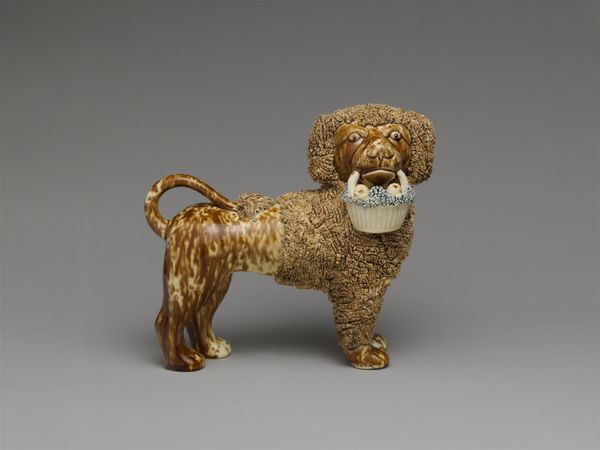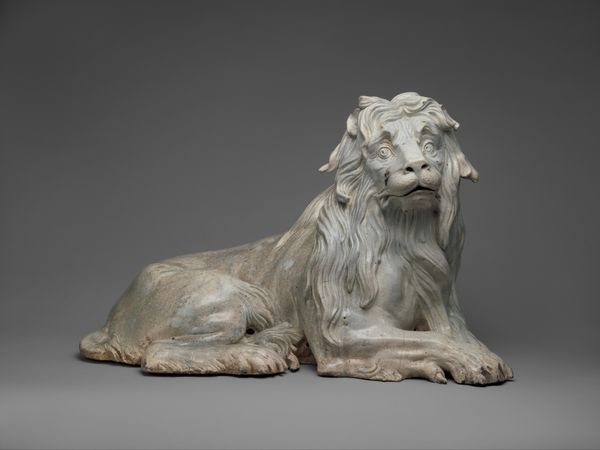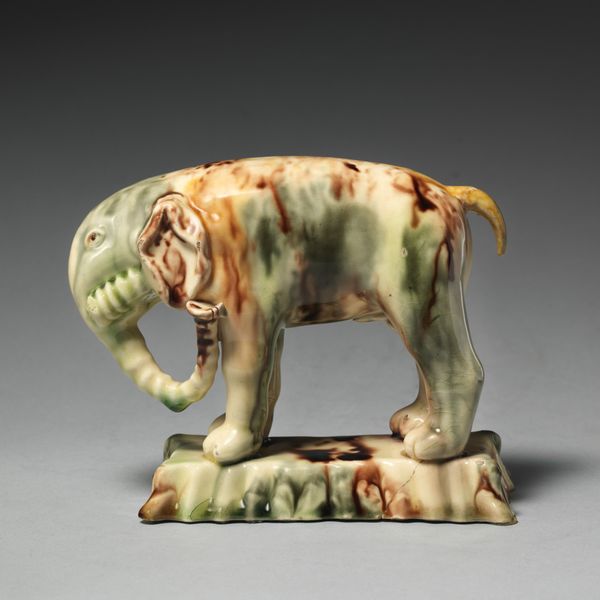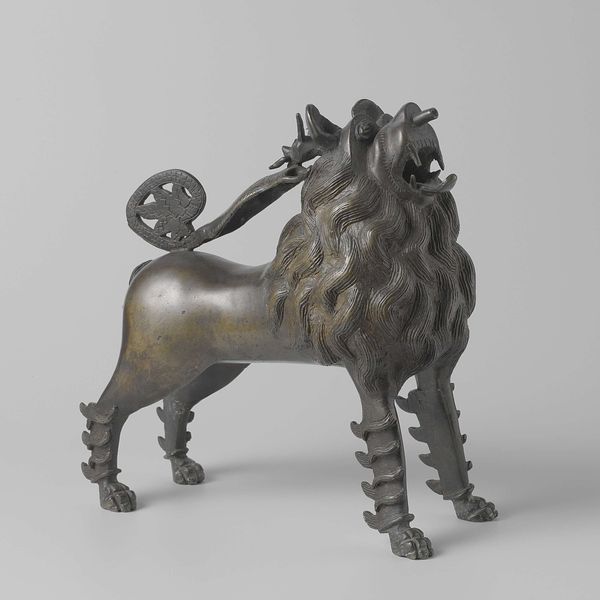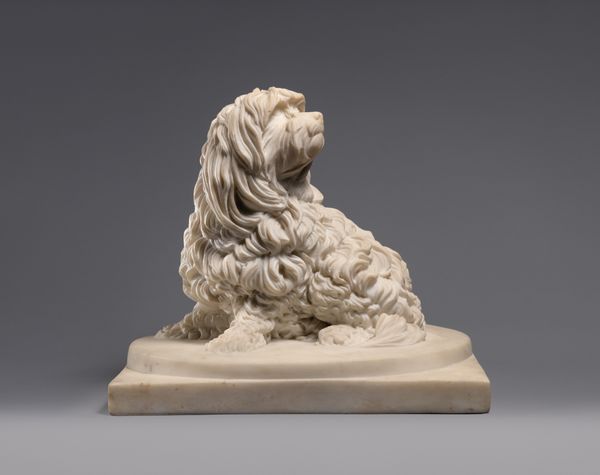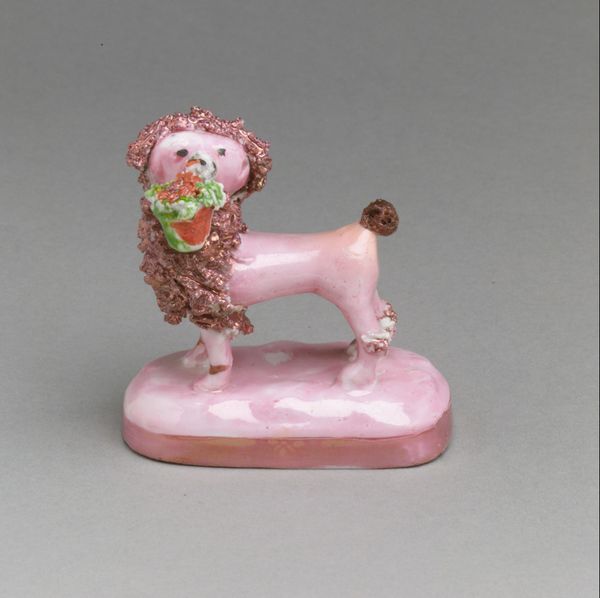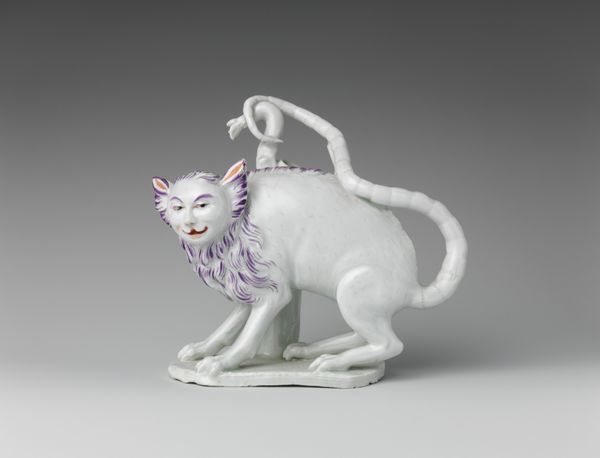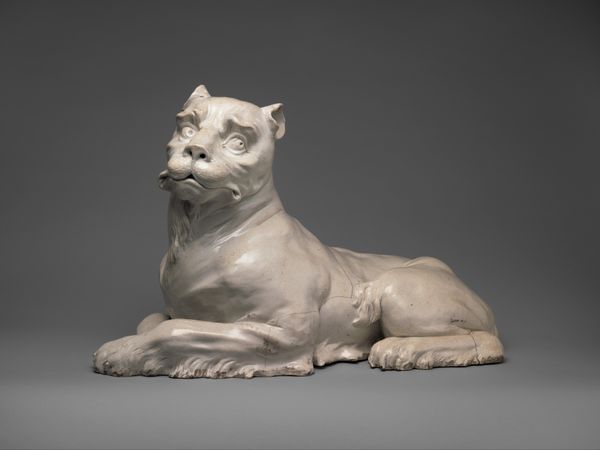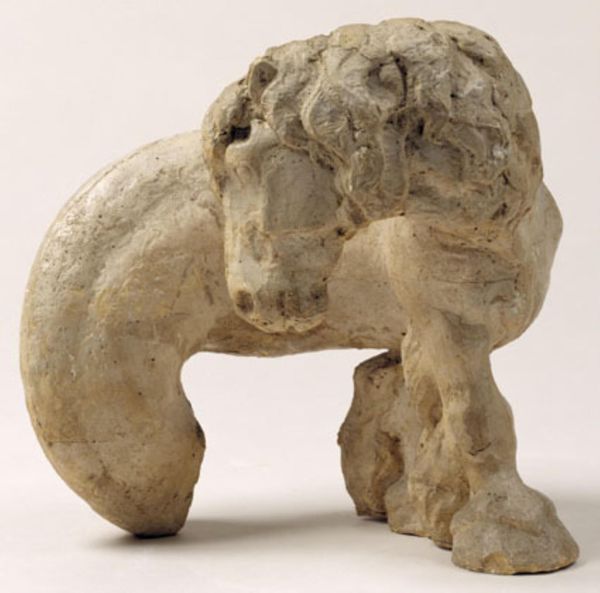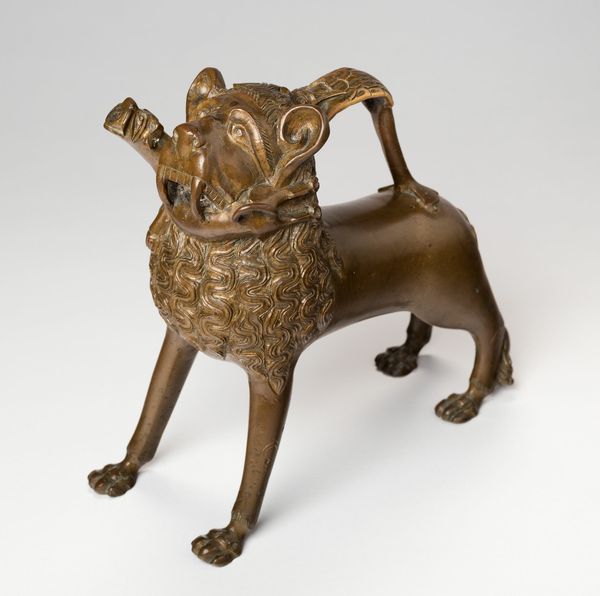
ceramic, earthenware, sculpture
#
animal
#
dog
#
ceramic
#
figuration
#
earthenware
#
folk-art
#
sculpture
#
united-states
Dimensions: 8 1/2 x 9 x 4 3/8 in. (21.6 x 22.9 x 11.1 cm)
Copyright: Public Domain
Editor: This charming sculpture, *Standing Poodle,* dates to the mid-19th century and was produced by the United States Pottery Company using earthenware and ceramic. It's so quirky! I am really drawn to its folksy charm, and it seems so earnest. What do you make of it? Curator: That “earnestness” you pinpoint is key. It's tempting to see this poodle as merely decorative, but I think we need to place it within the context of 19th-century American folk art. The era's rigid social structures often excluded marginalized voices. Domestic objects like this—everyday items produced anonymously or by lesser-known artisans—functioned as a kind of quiet resistance, a space for expressing personal identity. Editor: A resistance? But it’s…a poodle. Curator: Exactly. Why a poodle, and what did that breed signify? It’s a breed strongly associated with Europe, specifically France and the aristocracy. This might indicate aspiration, access, and ideas about social mobility available even to working-class families through consumer goods. These choices reflect cultural negotiation and can tell us about hidden class desires within American society. Editor: So it’s not just a kitschy statue, but a statement about class? How radical! Curator: Well, maybe not radical in the streets. But considering that it was likely displayed in someone's home, this cute kitsch critter may serve as a marker of someone’s social mobility. The United States Pottery Company may be responding to popular aesthetics while engaging with societal undercurrents regarding immigration and race. Consider, too, the role of animals – pets – as stand-ins for human dynamics. How does this earthenware form articulate America’s shifting socio-political landscape during the pre-Civil War era? Editor: That’s a lot to think about with one little poodle. Now I want to look at every dog statue in a museum! Curator: Exactly. Art whispers these ideas; sometimes we have to really listen. It’s so rewarding when we can decode those silences.
Comments
No comments
Be the first to comment and join the conversation on the ultimate creative platform.
